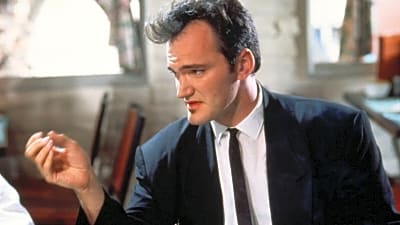
Walk into any clubhouse and you'll hear the same stories. Golfers spinning tales that would make a novelist jealous — about distances that defy physics, scores that exist only in dreams and putts that somehow don't count when they miss.
We've all been there. Hell, we've all said these things. With nearly three decades in the game, 17 of them and counting as a PGA Professional and Coach, I've heard them all, and probably told a few a time or two about my own game.
But what if our biggest obstacle isn't that sand trap on 18 or the water hazard we keep finding? What if it's the stories we keep telling ourselves?
"I Crush My Driver 280 Yards"
You'd almost think that every weekend warrior was bombing drives like Bryson DeChambeau if you believed all that 19th hole talk. The brutal truth from Trackman data? The average male golfer hits it 225 yards, and the average female golfer hits it 178.
You know that one drive you hit? Of course you do, because you talk about it all the time to your kids. It was the one you hit 340 yards. No, sorry, the one you CRUSHED 340 yards. You do, of course, forget the small details — caught the cart path just right, took two perfect bounces, then rolled forever downhill. Your brain filed that baby away as proof of what you can do. However, every other drive since then? Well, those get conveniently forgotten, pushed aside like brussels sprouts at dinner.
Your ego remembers the highlight reel, but your scorecard remembers everything else.
"I Should Be Sticking 12 Greens Every Round"
Lost count of how many times I've heard this complaint from my competitive juniors, whom I coach. Most act like missing greens is some personal failing, like they're just one adjustment away from playing like a tour pro.
Reality check: PGA Tour players — guys who've been swinging clubs since they could walk — average 12 greens in regulation. Scratch golfers manage about nine. The typical weekend player? You're looking at five or six if you're lucky.
So if you're carrying a 15-handicap and getting frustrated about "only" hitting seven greens, you might want to recalibrate those expectations. Better yet, spend that frustration energy working on your wedge game. Trust me on this one.
"I'm Actually a Great Putter — Just Had Bad Luck Today"
Everyone thinks they putt like Tiger in his prime. I've yet to meet a golfer who admits to being average on the greens, despite the mathematical impossibility of that claim.
The numbers don't lie, even when we do. An average golfer takes 36 putts per round. Tour players, who practice putting until their backs ache, average 28.8. Yet somehow every golfer I know insists they're "usually around 30."
That round where you three-putted six times wasn't an anomaly — it was your putting exposed under pressure. The round where everything dropped was the anomaly.
"I'm Basically a Consistent 80s Shooter"
Oh, this one. The greatest fiction in all of golf. Listen to any post-round conversation and you'd think the entire golf population shoots in the low 80s. According to their own accounts, anyway.
The USGA has different ideas. Only 25 percent of golfers break 90. Under 5 percent consistently shoot in the 70s. The average round? Right around 100.
That 83 you shot two summers ago during the member-guest when the pins were accessible and you putted like you'd sold your soul at the crossroads? That's not your game. That's a beautiful exception to your game.
"One Quick Fix Will Transform Everything"
The golf improvement fantasy goes something like this: one lesson, one grip change, one new driver, and suddenly you're playing scratch golf. It's seductive because it suggests you're already good — you just need that one missing piece.
Doesn't work that way. That slice you've battled for half a decade isn't disappearing with a different ball position. Golf improvement happens like learning a language — slowly, through repetition, with plenty of backsliding along the way.
Most golfers would drop more strokes by spending a month working exclusively on 50-yard wedge shots than they would from completely rebuilding their swing. But that's boring. Swing overhauls feel more dramatic.
"That Was Just a Mental Error"
The mind-game excuse covers a lot of sins. Topped your fairway wood? Mental mistake. Chunked a simple wedge shot? Obviously a mental error. Sliced your drive into the trees again? Had to be nerves.
Sometimes it's nerves. Most times it's technique.
If you can't hit that shot consistently on the range when there's no pressure, it probably wasn't your mind that betrayed you on the course. It was your swing. The mental game matters, but you also need actual physical skills to complement the positive thinking.
"I Always Rise to the Occasion in Competition"
Love this one. Golfers convince themselves they're clutch performers who thrive under pressure. As if they're built differently when money or bragging rights are on the line.
The data suggests otherwise. Tournament pressure typically adds 3-5 strokes to amateur scores. Your practice rounds don't count, but they do predict. If you shoot 88 when it doesn't matter, planning on 85 when it does is setting yourself up for disappointment.
The players who actually do perform better in competition? They practice like every shot matters. The rest of us just tell ourselves we're clutch while nervously adjusting our ball markers.
"No Point Practicing Putting — Every Green's Different"
Possibly the most convenient excuse in golf. Allows you to skip the most monotonous practice while feeling completely justified.
Yes, greens change. Speed varies. Grain affects roll. But alignment is alignment. Tempo is tempo. Distance control is distance control. These fundamentals transfer from green to green, just like basic math does from classroom to classroom.
Tour players practice putting religiously despite playing a different course every week. They've figured out that mastering the basics matters more than memorizing every subtle break. Your putting problems aren't because of green conditions. They're because you don't practice enough.
"My Distance Hasn't Changed Since My Prime"
Father Time remains undefeated in golf, but golfers refuse to acknowledge his victories. Everyone hits it just as far as they did a decade ago, apparently. Physics disagrees.
The average golfer loses about 2 yards annually after 50. That's not negotiable — it's biology. But watch a foursome of 60-year-olds choose clubs based on distances from their 40s and wonder why they keep coming up short.
Accepting your current ability level isn't giving up; it's a strategic move. Knowing and accepting your actual carry distances allows you to choose the right club, which in turn helps improve your score.
It is really that simple, but it all comes down to being honest with yourself. Your ego might bruise, but your scores will improve.
"I Just Need the Right Equipment"
The most expensive lie in golf. Equipment manufacturers love this one because it suggests the solution is always one purchase away. New driver for distance. Game-improvement irons for accuracy. Premium balls for better scoring.
Equipment can help, sometimes significantly, but a change in equipment alone will not be the answer to scoring problems. That new $500 driver you're eying won't straighten out your slice; it can certainly help, but only with a good understanding of why you slice in the first place.
Acceptance is the Answer
Look, golf exposes everything. Your physical limitations. Your mental weaknesses. Your tendency toward self-deception. The sooner you accept what you actually do instead of what you think you do, the sooner you start improving.
Your ego will probably hate this approach, but I tell you, your scorecard will love it.
More must-reads:
- Penn State makes shocking, and justified, drop out of AP Top 25
- MLB playoff takeaways: This could be Aaron Boone's last chance
- The 'MLB playoff debut strikeouts leaders' quiz
Customize Your Newsletter
 +
+
Get the latest news and rumors, customized to your favorite sports and teams. Emailed daily. Always free!








